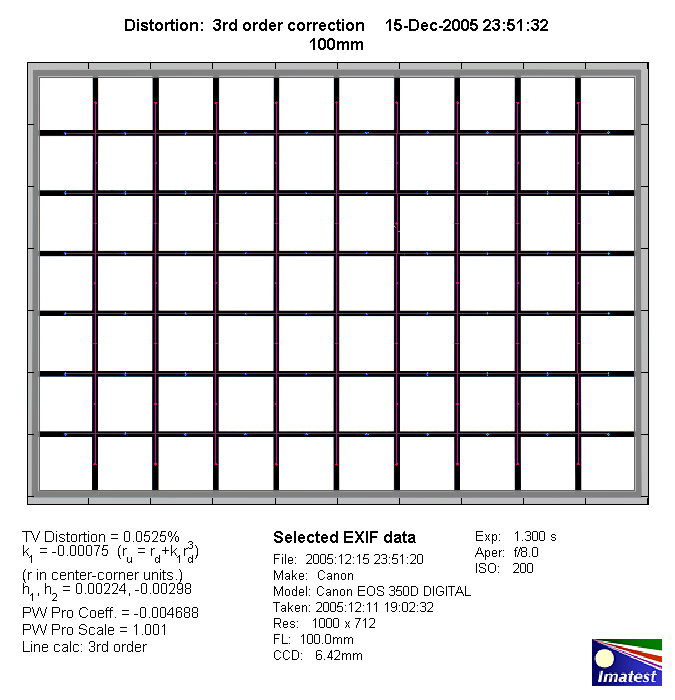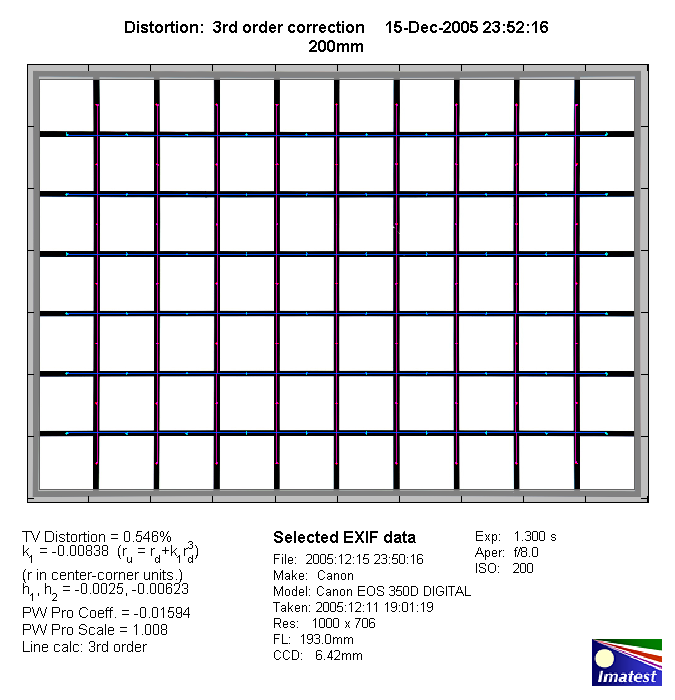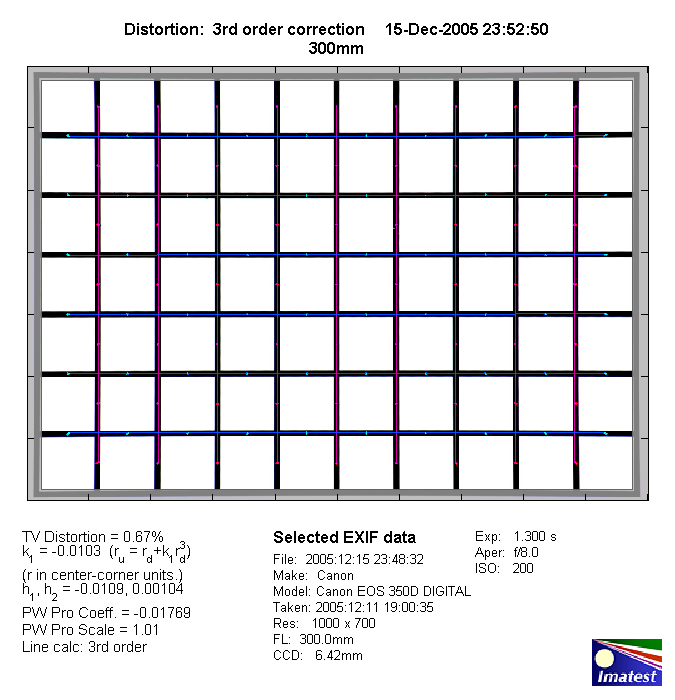|
Canon EF 100-300mm f/5.6 L - Review / Test Report - Analysis |
|
Lens Reviews -
Canon EOS (APS-C)
|
|
Page 2 of 2
Distortion
The level of distortion is very low to low throughout the zoom range. At 100mm
the lens is free of distortion changing to slight pincushion distortion at 200mm
and 300mm.
100mm:

200mm:

300mm:

As usual you should probably expect more distortion towards closer focus distances.
Vignetting
I used the lens a couple of years ago on a film SLR and here it produced some
vignetting at 300mm @ f/5.6. However, on an APS-C DSLR the lens can take advantage of
the sweet spot effect so the problem isn't overly pronounced. At 100mm and 200mm
the issue is basically negligible. At 300mm the situation deteriorates somewhat
but even at f/5.6 it requires quite critical scenes to see some vignetting and
stopping down a little resolves the issue completely.

MTF (resolution)
Despite its age the EF 100-300mm f/5.6L is easily able to achieve very good to excellent MTF50 results.
The center performance is generally excellent in the 100mm to 200mm range and still very good at 300mm whereas
the borders are (naturally) slightly worse.
It is interesting to note that two samples of the lens found their way to the test bench.
The first tested sample of the lens suffered from something that may be decribed as edge bleeding
present only at the right side of object edges resulting in worse performance results at 100mm and
200mm whereas the second sample produced slightly softer edges at 300mm.
The performance chart below shows the best of both worlds here - the 100mm and 200mm charts
were taken from the 2nd sample whereas the 300mm chart was taken from the first one. Obviously
the age of these lenses is beginning to take its toll to a varying degree.
Naturally it is interesting to compare this lens to the brand new EF 70-300mm f/4-5.6 USM IS and
... the king is dead ... long lives the new king. The EF 70-300mm IS can match the sharpness
of the L zoom at all focal length. However, the L zoom can still produce more snappy
(more contrasty) results at 300mm.
Please note that the MTF results are not directly comparable across the different systems!
Below is a simplified summary of the formal findings. The chart shows line widths per picture height (LW/PH) which can be taken as a measure for sharpness.
If you want to know more about the MTF50 figures you may check out the corresponding Imatest Explanations
Chromatic Aberrations
The lens produced a varying but quite low degree of chromatic aberrations (color shadows at
harsh contrast transitions) at the image borders. The average CA pixel width remains well
below 1 pixel at all focal length so it's usually nothing to worry about. The CAs varied
somewhat between the left and the right image side.

Sample Shots
Due to network bandwidth limitations I can't provide any sample images at this state.
Verdict
The Canon EF 100-300mm f/5.6 L can still convince optically with very high resoltion
figures, low distortions and quite low vignetting (on APS-C). However, mechanically the lens
is totally outdated and clearly substandard compared to current Canon L lenses. In fact most
of today's consumer zooms are better in this respect. If you cannot afford the new
EF 70-300mm f/4-5.6 USM IS the ancient EF 100-300mm f/5.6 L remains still worth a serious
thought regarding its much lower price tag on the used market and it still puts most
other xx-300mm zoom lenses to shame specifically regarding contrast.
|